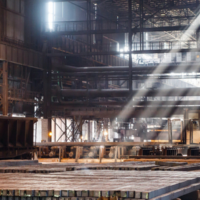With the country’s first-ever Emissions Reduction Plan on the books, Canada is ramping up action to meet its climate goals. But do we have the workforce we’ll need to power the low-carbon transition?
Shifting Canada’s economy to succeed in the transition is going to require a massive, highly skilled workforce across a range of sectors. This job growth can and should exceed the losses expected in transition-vulnerable industries.
Skills development and training to build a net zero workforce will help lay the groundwork for new sources of economic growth—but only if we start planning now.
The missing pieces in the Canadian labour market
Canada faces two separate labour market challenges on the way to net zero.
First, the current Canadian workforce is not prepared for the growth expected in the net zero economy. By 2025, Canada is estimated to be unable to fill 27,000 net zero jobs. Up to 400,000 new high-skilled jobs will be necessary to reach net zero by 2050. But that economic growth depends on having skilled labour available.
Clean industries are already struggling to recruit qualified employees. In a recent publication by the Canadian Climate Institute that assesses province-specific risks and opportunities in the low-carbon transition, a lack of skilled labour was identified as a barrier to scaling clean growth in every province.
This first challenge is exacerbated by the fact that many of the skills required in transition-opportunity sectors are rapidly changing as new technologies and processes emerge—requiring Canadian workers in these sectors to be nimble and to consistently upskill.
The second labour market challenge Canada faces is that the jobs of workers in transition-vulnerable sectors are vulnerable in the face of accelerating global shifts toward low-carbon economies. Approximately 70 per cent of Canada’s goods exports, according to the Canadian Climate Institute’s report Sink or Swim: Transforming Canada’s economy for a global low-carbon future, are vulnerable to the low-carbon transition. Hundreds of thousands of Canadians working in these sectors, disproportionately Indigenous people and members of some minority groups, are at risk of job loss if their employers don’t adapt to new market realities. Communities dependent on these vulnerable employers will face the greatest challenges.
Nevertheless, almost every vulnerable occupation has a transition pathway to a low-carbon job with just one year of training, meaning skills training programs can help solve both problems.
Smarter skills training funding
Many workers will need skills training as part of their pathway into the net zero economy. While the country’s population is highly educated, Canada lags behind its global counterparts in funding and delivering skills training and often fails to provide opportunities for those who need them most.
The Canada Training Benefit, for example—the country’s main training funding mechanism—provides up to $5,000 to help workers access the training needed to keep their jobs or prepare for new ones. While the benefit is expected to reach 600,000 people, there is an opportunity to make it more inclusive and effective in supporting transitions.
One option here would be to pair the Canada Training Benefit with career development to create a more comprehensive training initiative. Adding guidance would ensure that training is part of an intentional, strategic, and efficient pathway into in-demand jobs in the net zero economy. Initiatives could target at-risk sectors, similar to the approach used in Australia.
Implementation challenges
Governments must also recognize that labour isn’t perfectly mobile: workers in one region can’t necessarily fill labour gaps in another, even with retraining, as workers may not want to move far from their communities.
The regional concentration of at-risk jobs means that comprehensive responses to displacement must be deeply embedded in local economies. Advice and guidance should reflect the opportunities available in the local and regional labour market, as well as further afield.
Regional planning has a big role to play in ensuring that policy responses not only see the big picture of Canada’s future growth opportunities, but also leverage community strengths and assets. Key stakeholders including government, industry, unions, post-secondary and skills training organizations, local economic development organizations, and business roundtables are integral to tailoring a local response.
Proactive, not reactive
The best time to start building tomorrow’s labour force is now.
Waiting until transition risks become transition realities would leave Canadian workers and Canadian firms with fewer options.
Reactive solutions like pension bridging and income replacements can support those immediately affected by the shift to a low-carbon economy, and these tools have played an important role in Canada’s coal and forestry transitions. But reactive solutions alone aren’t up to the scale of the challenge.
In contrast to Canada’s coal transition, which affected approximately 3,000 workers, the number of Canadians who work in all transition-vulnerable sectors is orders of magnitude greater: 800,000 workers across the country. The scale of the challenge demands we think bigger.
Canada should be taking lessons from Germany’s coal transition and adopt an anticipatory approach. Proactive investments in skills development for new workers and re-skilling/up-skilling for those vulnerable to job loss can and should play a key role in building this new workforce.
Meeting the moment
The reactive, small-scale approach that characterized Canada’s move away from coal is no longer sufficient.
Instead, a concerted effort by governments to invest in the sectors that will fuel Canada’s growth in a net zero world and the skills training needed to ensure we can fill the resulting jobs will be essential for Canada’s future prosperity.
The earlier Canada acknowledges the scale of this challenge, the easier it will be to build the net zero workforce to transform Canada into a net zero powerhouse.







